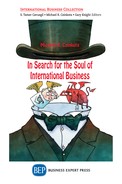Entrepreneurial Money Produces Residency Permits

A successful Chinese entrepreneur showed me a news article. It reported that wealthy Chinese could buy an American passport and become U.S. citizens. Is this really true? What are the implications of this visa program?
The U.S. Congress established the U.S. Employment Based Fifth Preference (EB-5) program in 1990, to link investment, employment, and residency. Three years later, the program language was relaxed from “to create 10 direct employment opportunities,” to “directly or indirectly create 10 job opportunities.” This is broad and flexible wording. It is designed for entrepreneurial and wealthy investors outside the United States, who fund a new commercial enterprise of at least $500,000 for investments. Under the program, those entrepreneurs, their spouses, and their unmarried children under 21 years old can apply for green cards permitting residency. The objective is to attract foreign investments to the United States, and to stimulate economic development and job creation.
EB-5 demand has increased rapidly. In 2012, President Obama extended the program. In May 2017, Congress extended the EB-5 Program until September 2017. There are many supporters.
In 2014, 10,000 EB-5 petitions were filed with the United States Citizenship and Immigration Services (USCIS). Overall, 5,115 applicants have been approved. Over $2.5 billion investments were attracted. An additional $6.2 billion are awaiting federal adjudication. EB-5 capital is also an attractive low-cost funding tool for project developers in the United States. It offers foreign investors a way to permanent residency that is not backlogged by other applications and does not require sponsorship by a U.S. employer.
Throughout the world today, numerous programs like the EB-5 have been established. In Australia, for example, foreign investors are granted the opportunity to immigrate, but only receive temporary residency for four years. An investment of AUD $1.5 million in an Australian company (US$1.2 million) is required. France allows foreign investors to obtain residency for 10 years by making a “long term and non-speculative investment of at least €10 million (U.S $11.8 million) in industrial or commercial assets.”
There is a standard moral objection to the EB-5 program: the United States should not be in the business of selling the right to live there. This claim suffers from a slight misunderstanding. In effect, the government gives the visas away to profit-making businesses that have jumped through the program’s requisite bureaucratic hoops. Then the companies can solicit investment based on the promise of permanent residency. In spite of 10,000 slots a year, 40,000 investors still wait for a green card. Obviously investor needs have not been met.
Investment immigrants are in high supply. The U.S. government should use the opportunity and open the gates to them. The United States has an immigration culture, with a spirit willing to absorb both elites and refugees of the world.
However, change must come; the program needs to be refined in terms of size of investment, number of jobs generated, industry direction, geographic location, and job recipients. I believe that the investment minimum should be $2.5 million, and the American job creation shall be at least 25. Then we can continue this program helping both investors and employees; a noble outcome!
